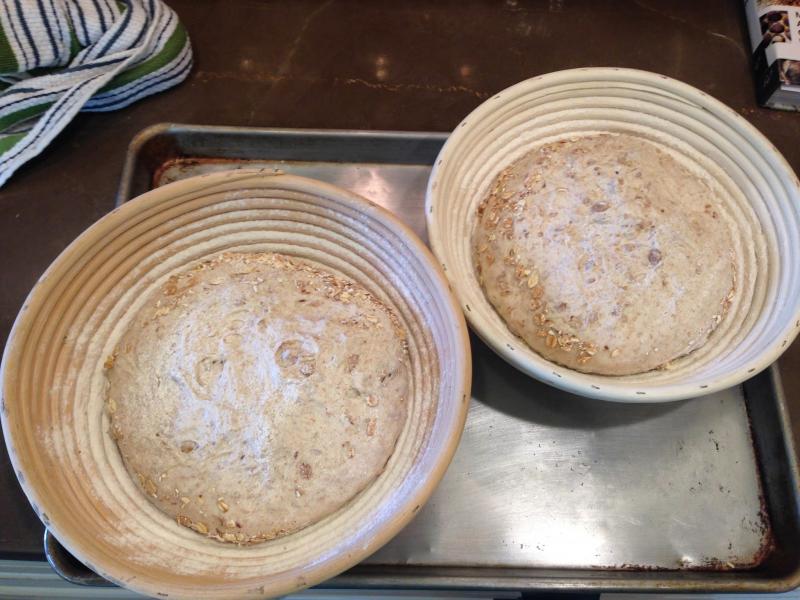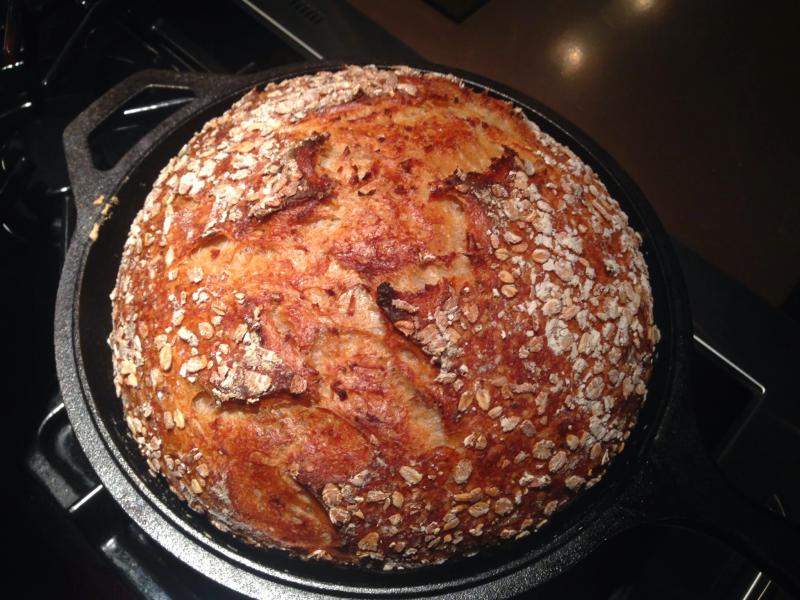In between World Cup games, I thought I’d catch up on a couple of recent bread experiments and bakery visits. I’ve been traveling for work quite a bit this Spring/early Summer, and two recent trips afforded me the chance to stop by the bakeries of two favorite bread book authors, Chad Robertson (Bar Tartine) and Ken Forkish (Ken’s Artisan Bakery).
Tartine was, as always, pretty phenomenal. His style bread was, 8 or 9 years ago, what initially got me hooked on levain bread baking. We had brunch at Bar Tartine, and took that opportunity to order a couple of their loaves to go – the classic Country Loaf, as well as an Oat Porridge boule.


I was amazed by the size of the Country Loaf – at least twice the size of the batards I produce at home. Rather than cut into it at the restaurant, we ended up hauling this one back on the plane to Seattle and immediately froze it, to enjoy later. Later ended up being about 2 weeks, when we had steamed clams with a large group of friends that cried out for crusty loaf of sourdough. Brushed with some EVOO, grilled, it was amazing.


The Oat Porridge bread was a first for me at Tartine, and we cracked into almost immediately, eating as we walked around the city. It has a really lovely, custardy crumb and dense, dark crust. My wife, in particular, love it and asked me to try it soon at home.
Flash forward to just last night and I gave the Oat Porridge a go at home. I’m pretty happy with the results. Nice oven spring and soft crumb – borderline gummy, which I assume if from the porridge portion (I ended up using Bob’s Red Mill 5 grain cereal). I didn’t get the crust to be quite as dark as I had hoped, despite leaving the loaf in for an extra 8 minutes – would love any tips/thoughts on how I might do this next time around?



Also, I monkeyed with the final proofing time, as to adjust to our weekend schedule. After a 1 hour autolyse and then 3.5 hr bulk fermentation, the dough looked read to retard, so I put it in the fridge for what ended up being 6.5 hours (instead of a full “overnight”), pulling it out just before bed for an additional hour at room temp while the oven pre-heated. Everything seems to have come through OK, and I will definitely be playing with this recipe some more, as I’m lately fascinated with flavor and texture of porridge breads
In between levain breads, I made a quick pizza dough (instant yeast + Cuisinart recipe), retarded in the fridge for 3 days, baked on a baking steel for just over 5 minutes. The quality of home pizza on the steel continues to amaze me, almost regardless of the dough recipe I try. I really can’t imagine ever going back to a regular stone at this point, as the quick bake and char from the steel is pretty darn close to an authentic New York-style pie.




And finally, for giggles, I am making a batch of banana-infused Irish Whiskey a friend at work raves about. Easy to make -- simply cut up 3 bananas and combine with a bottle of Jameson in a sealable jar. Let it sit for 3 or 4 days, and then drain out the bananas through a fine mesh sieve, and pour the whiskey back into the bottle. Drink on the rocks with a large ice cube.

Cheers,
Drew